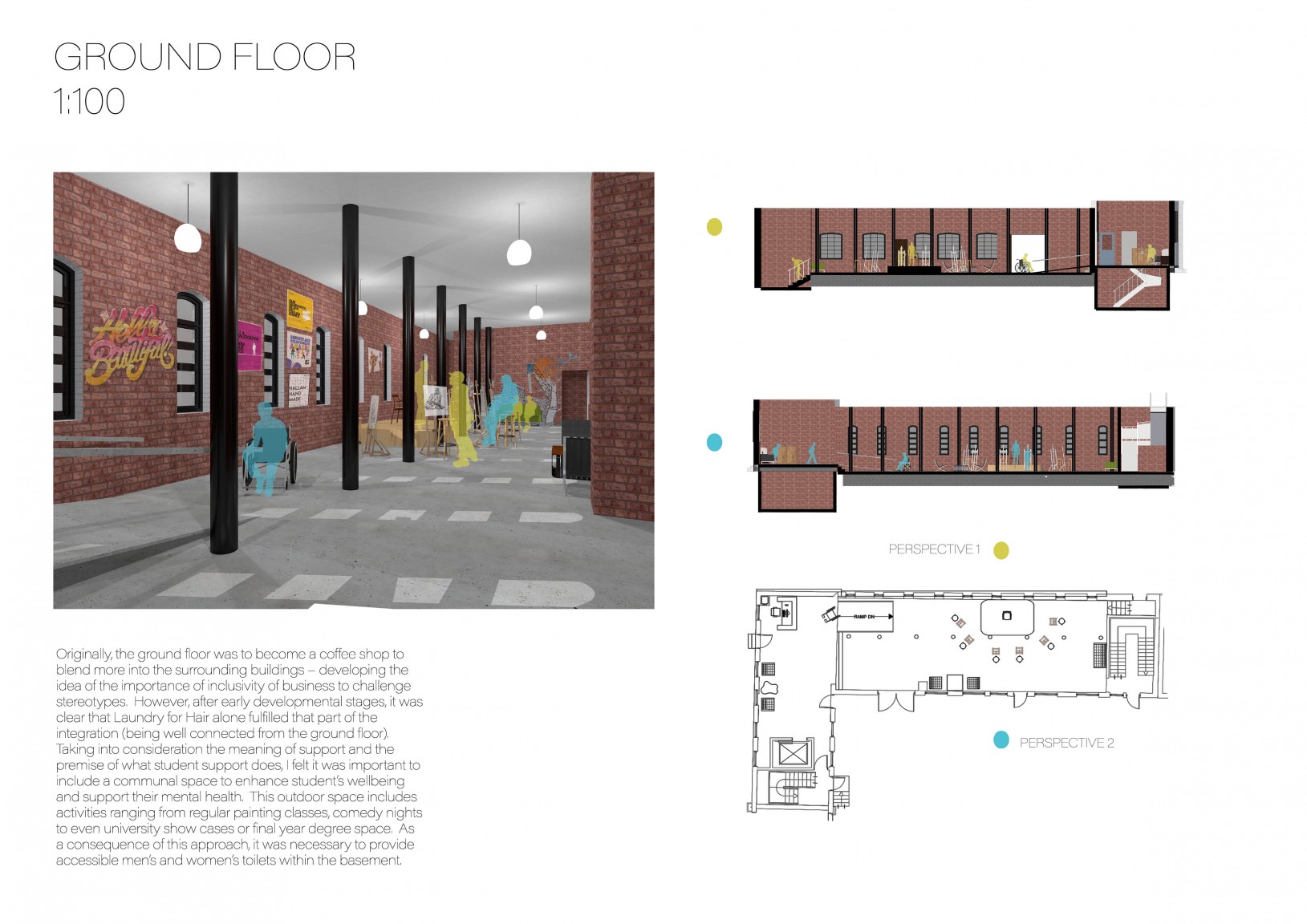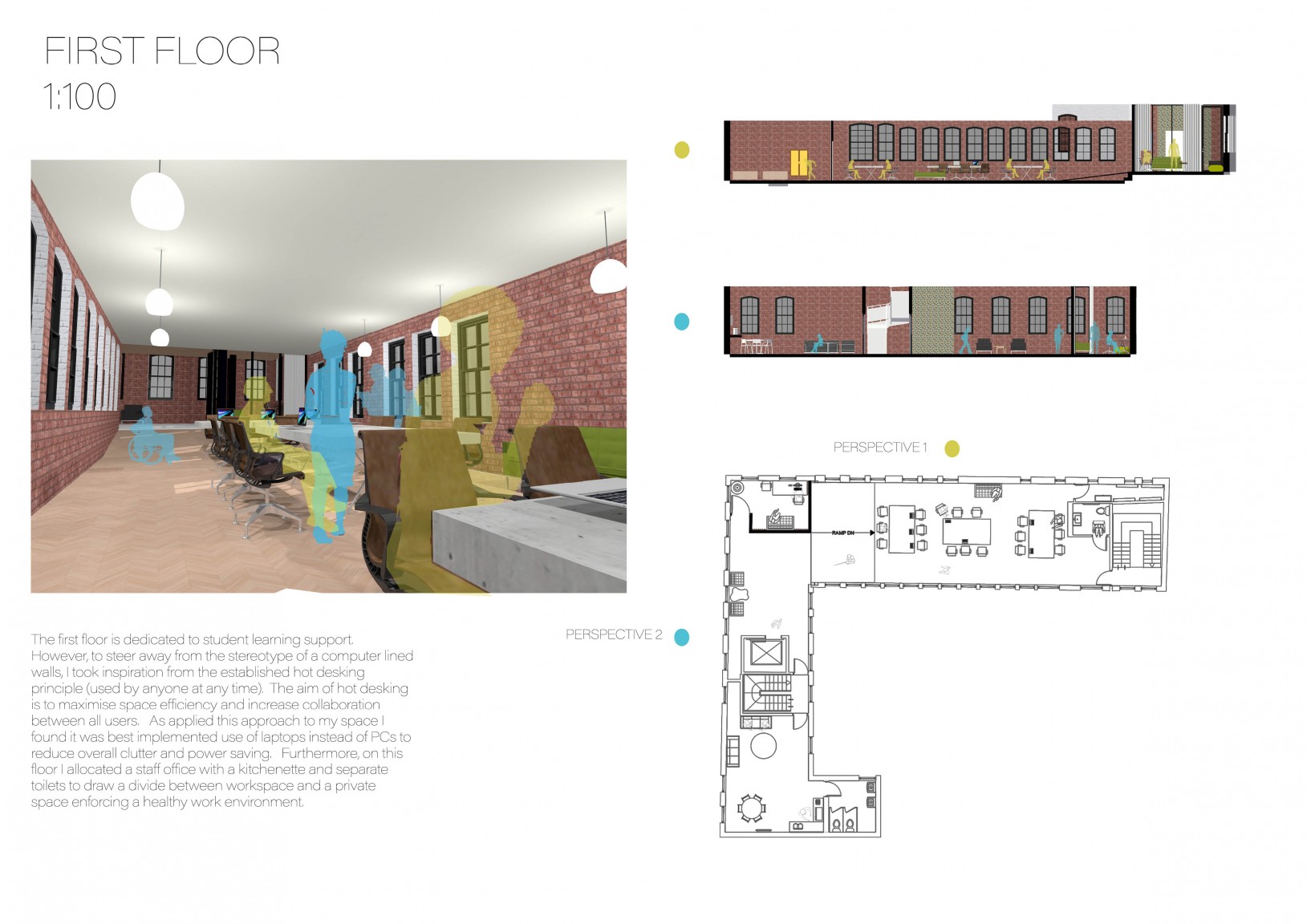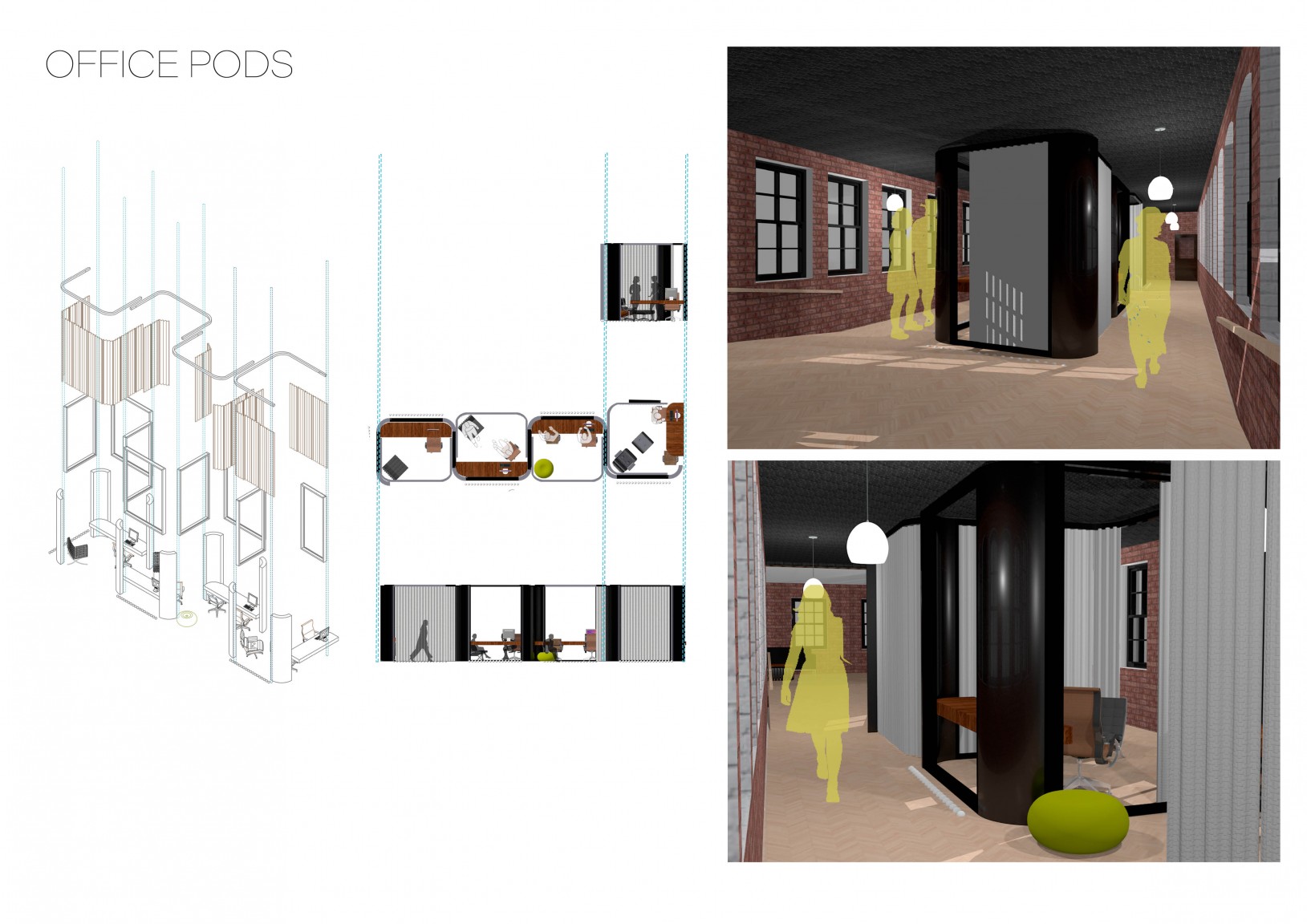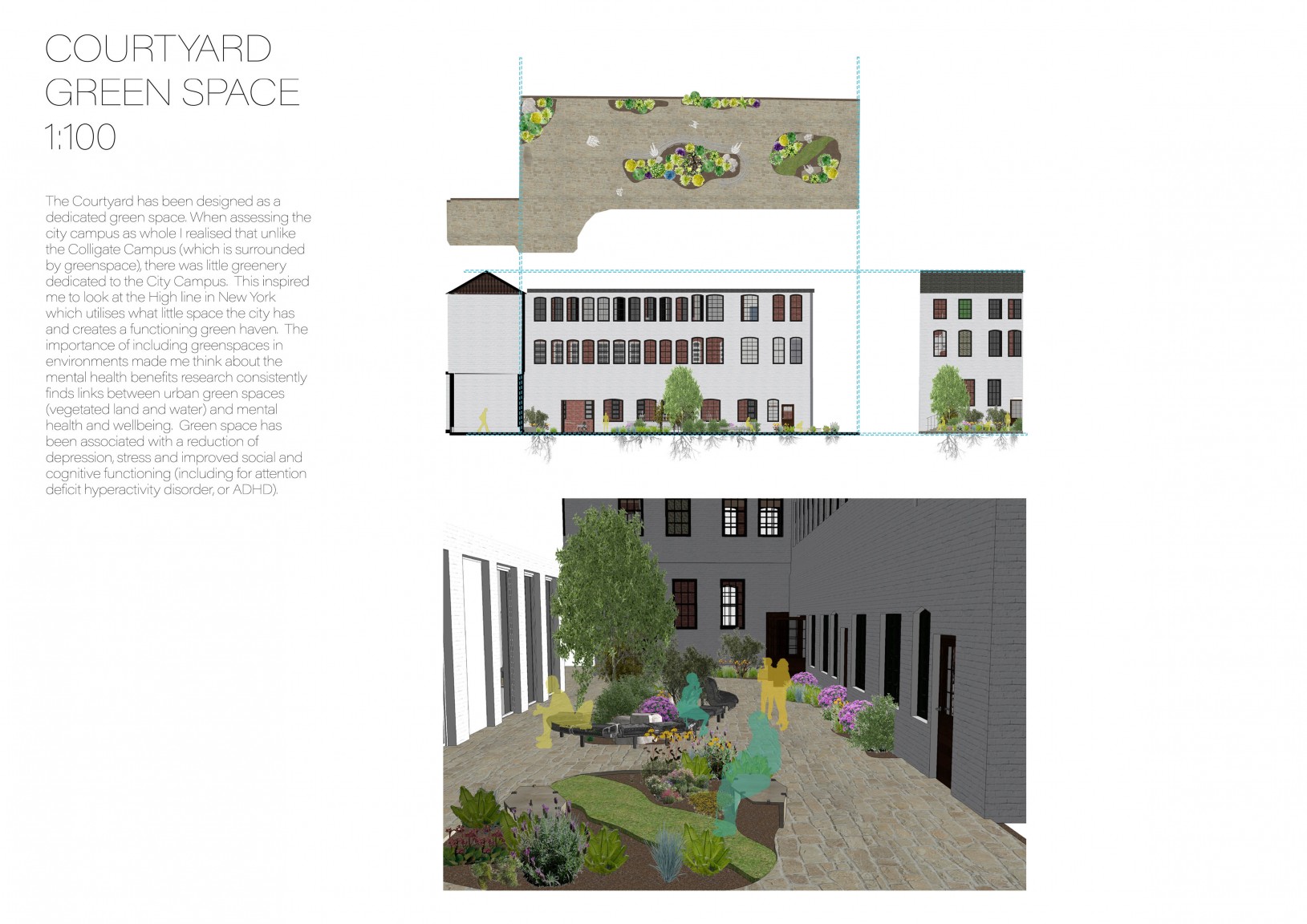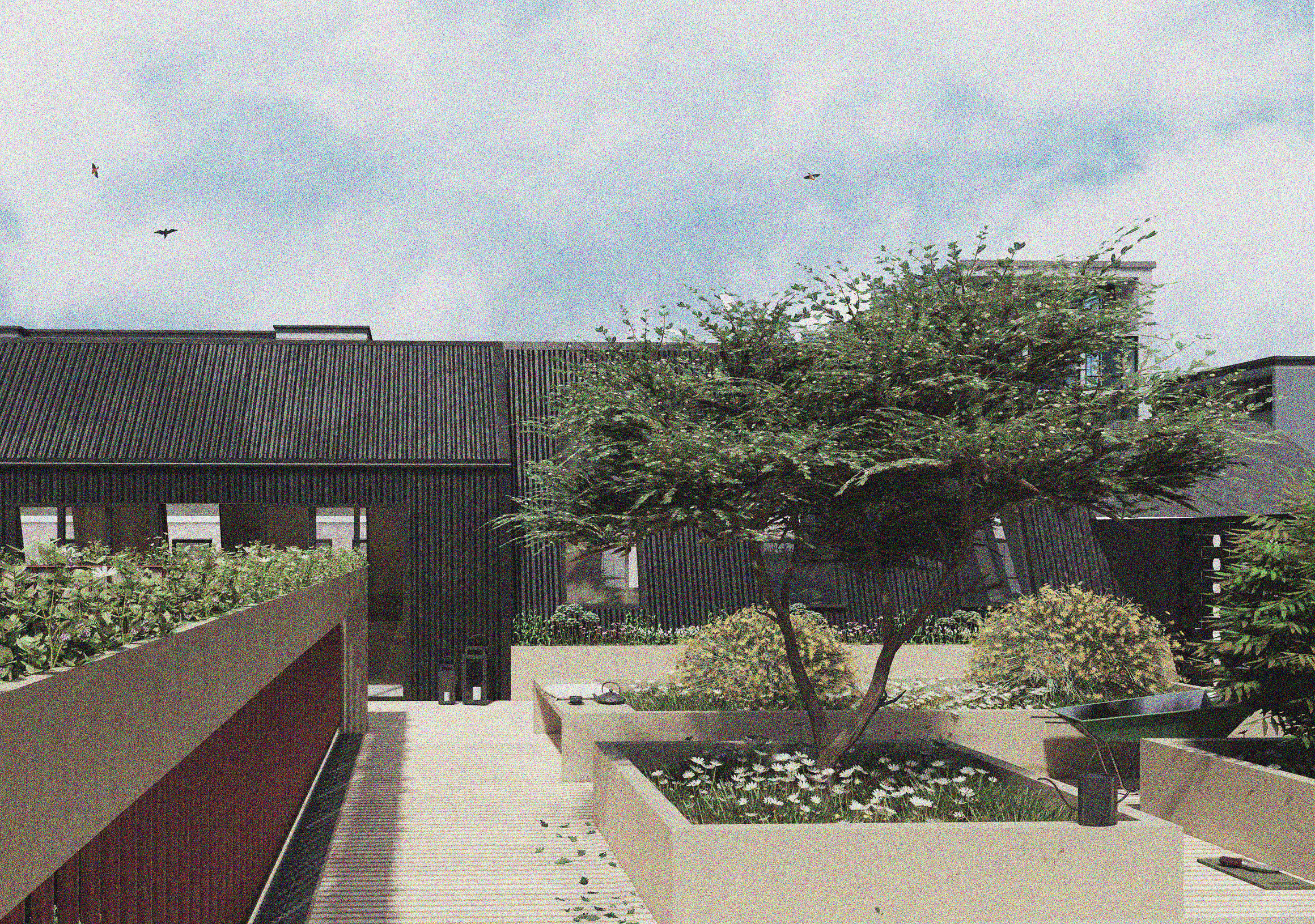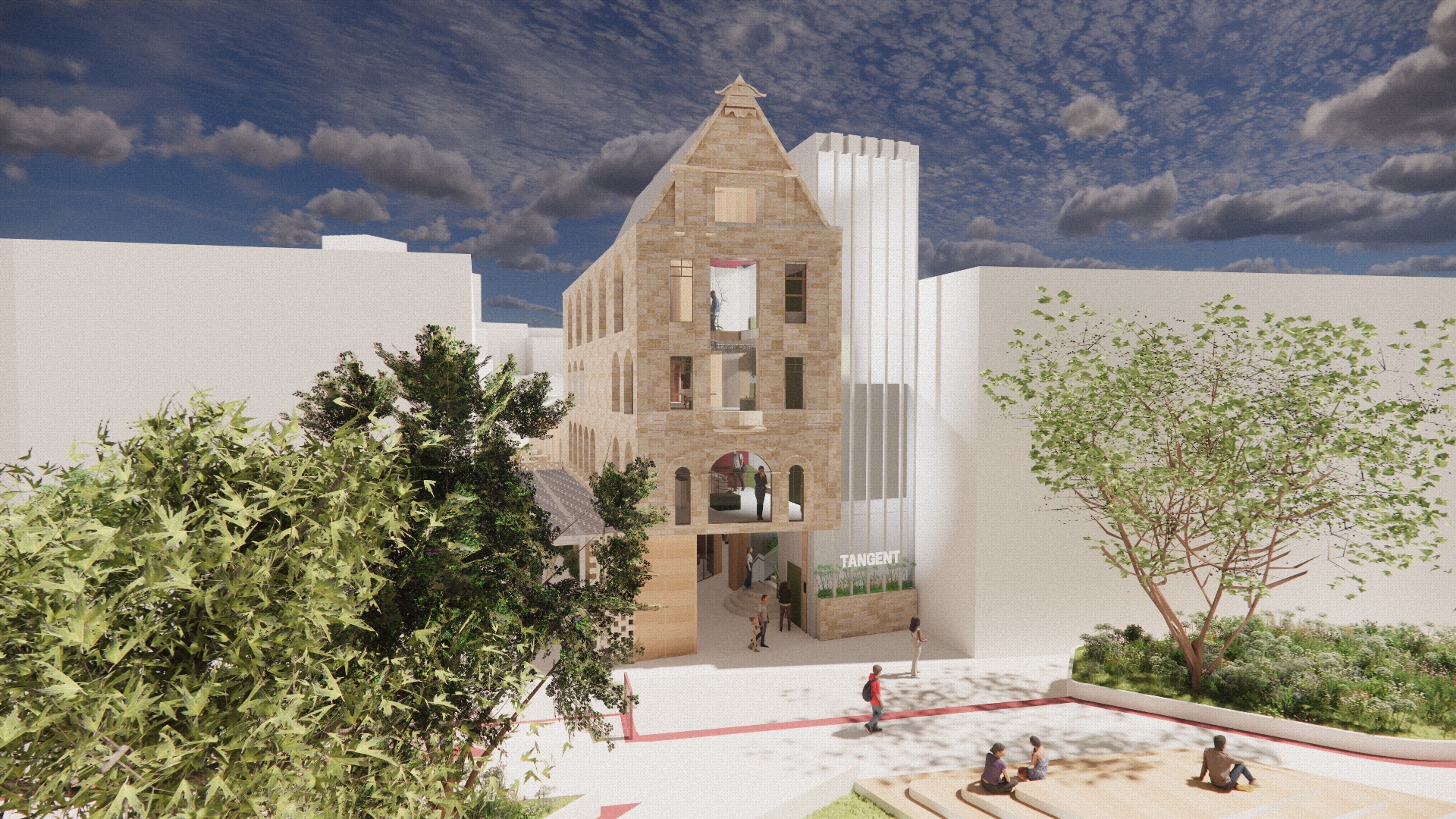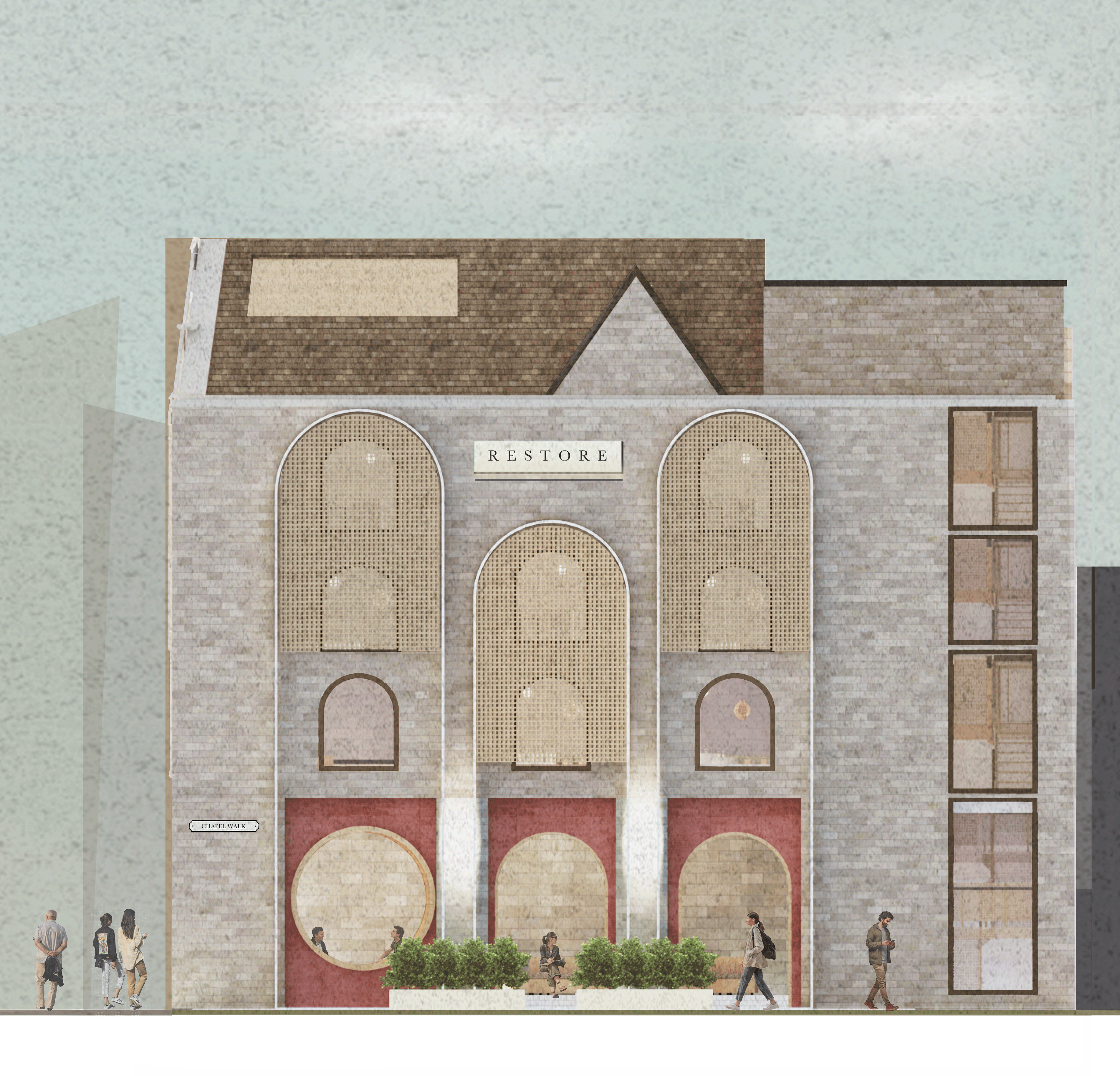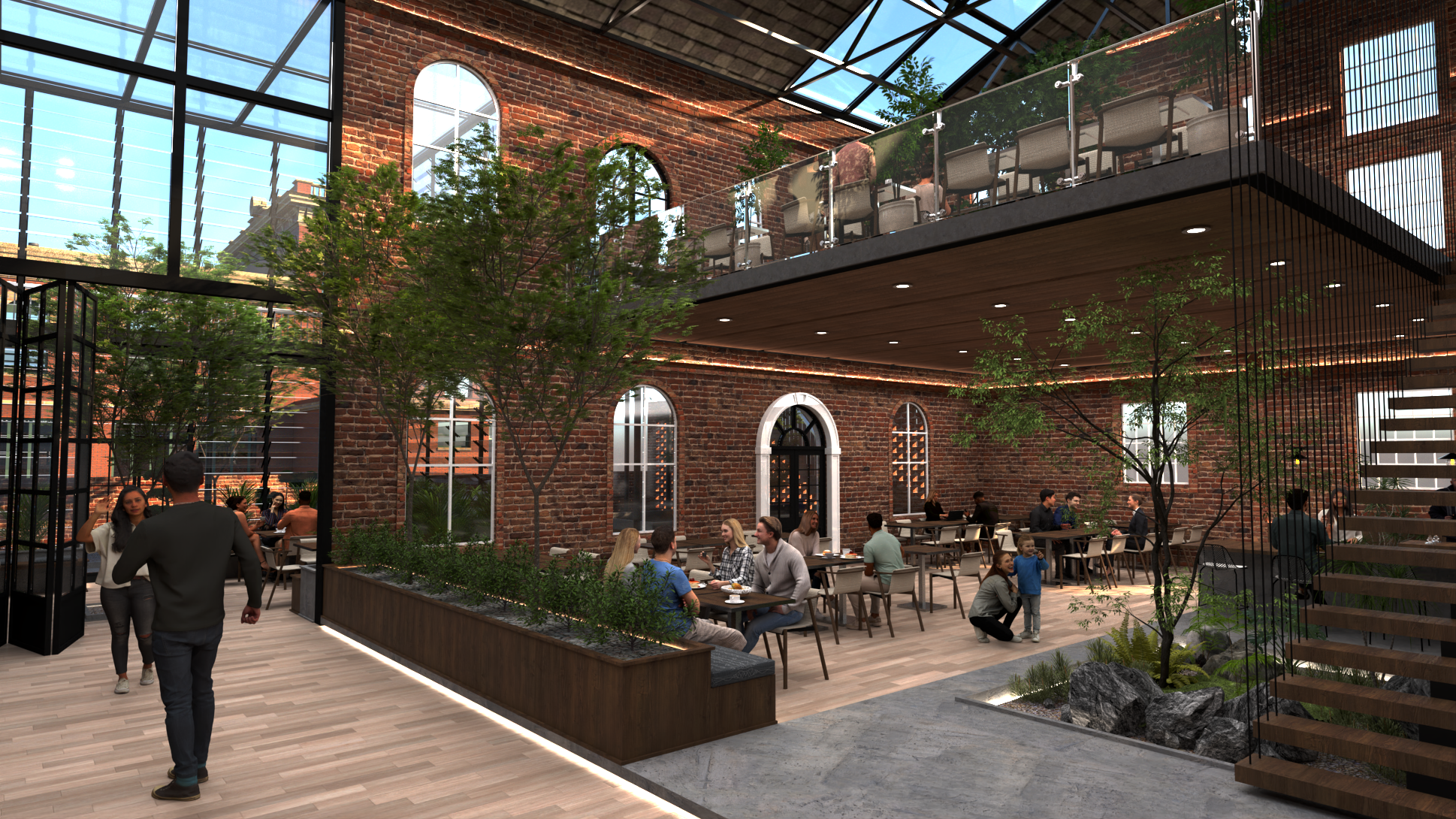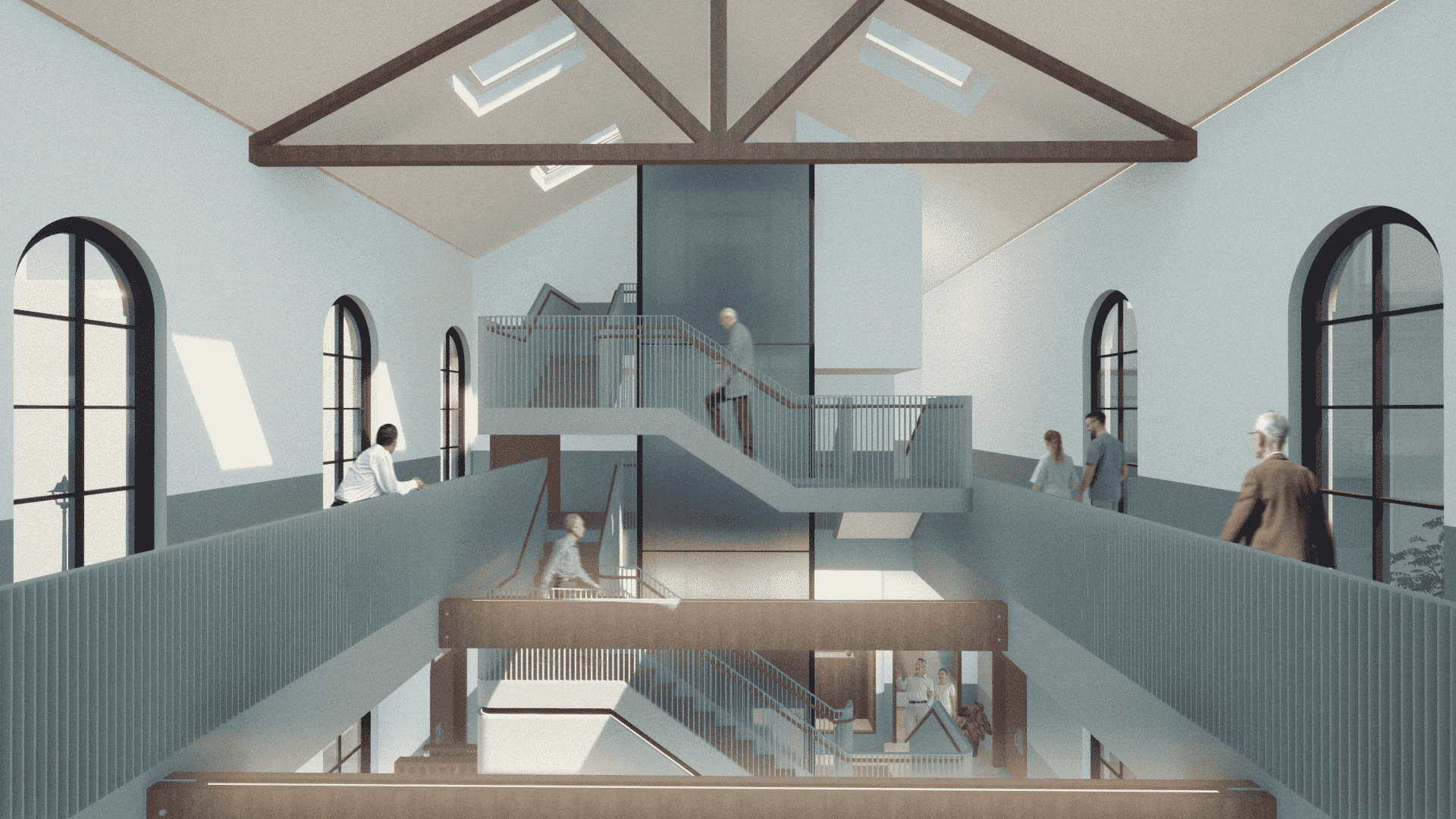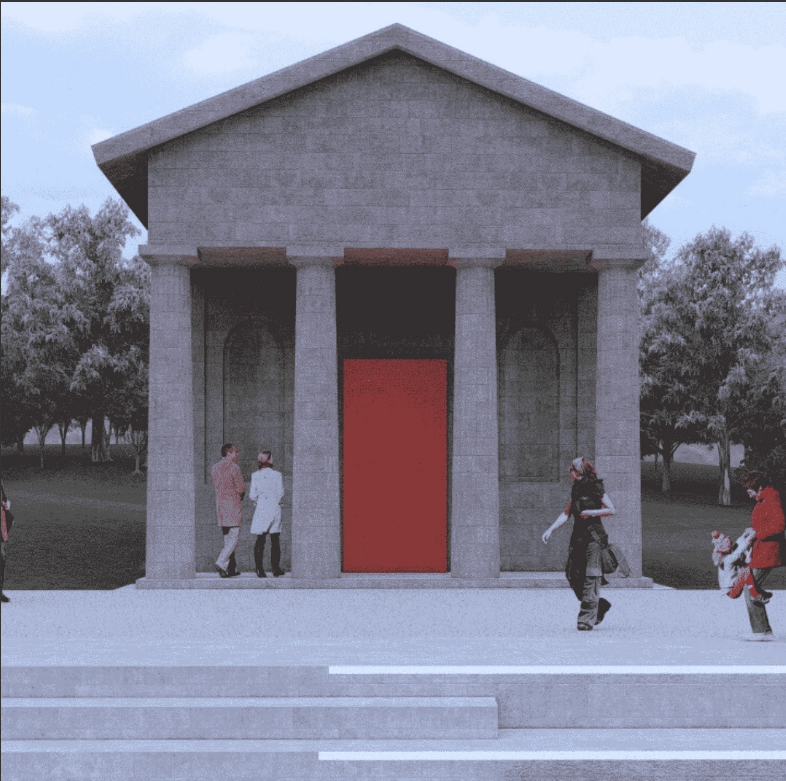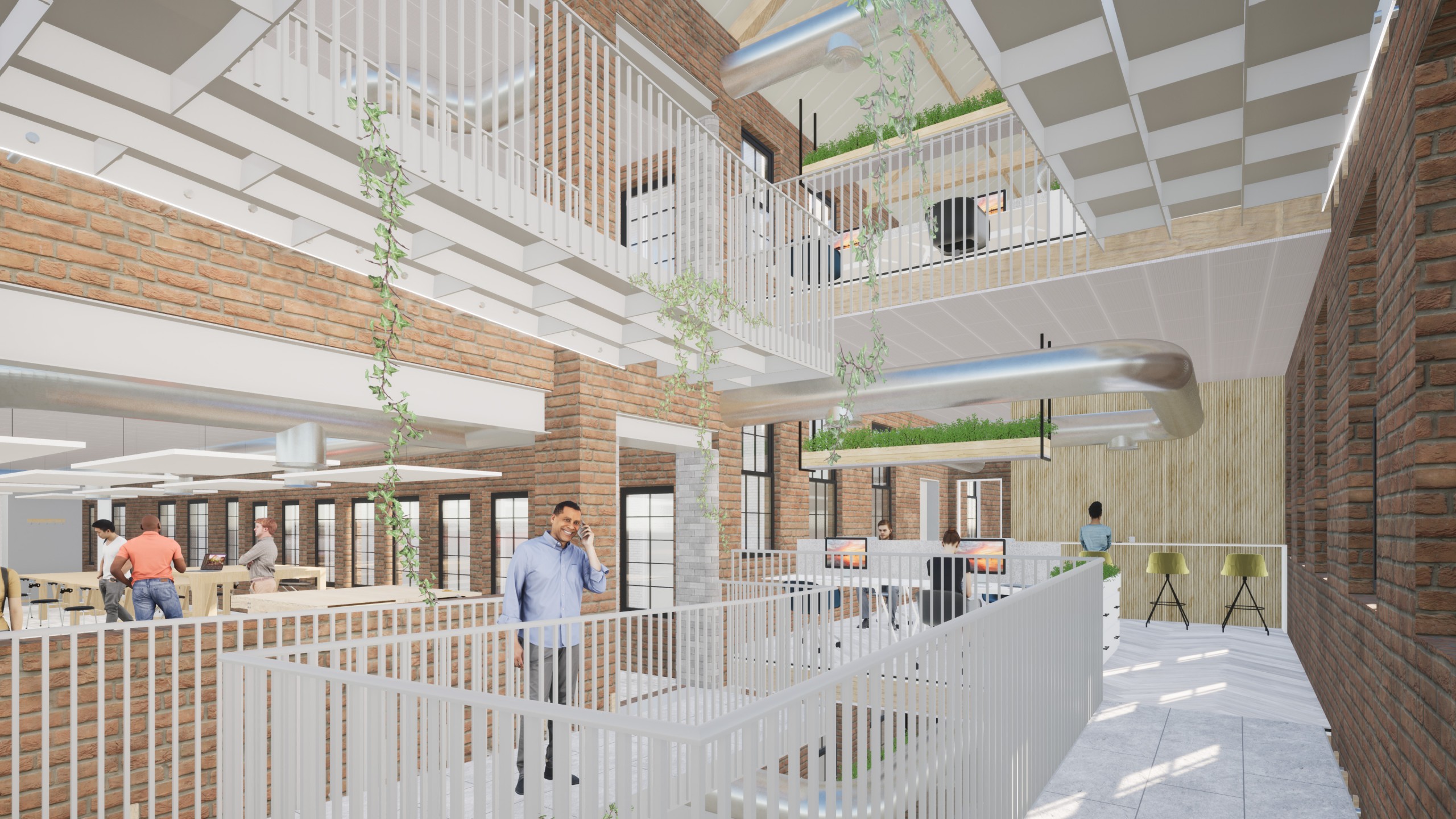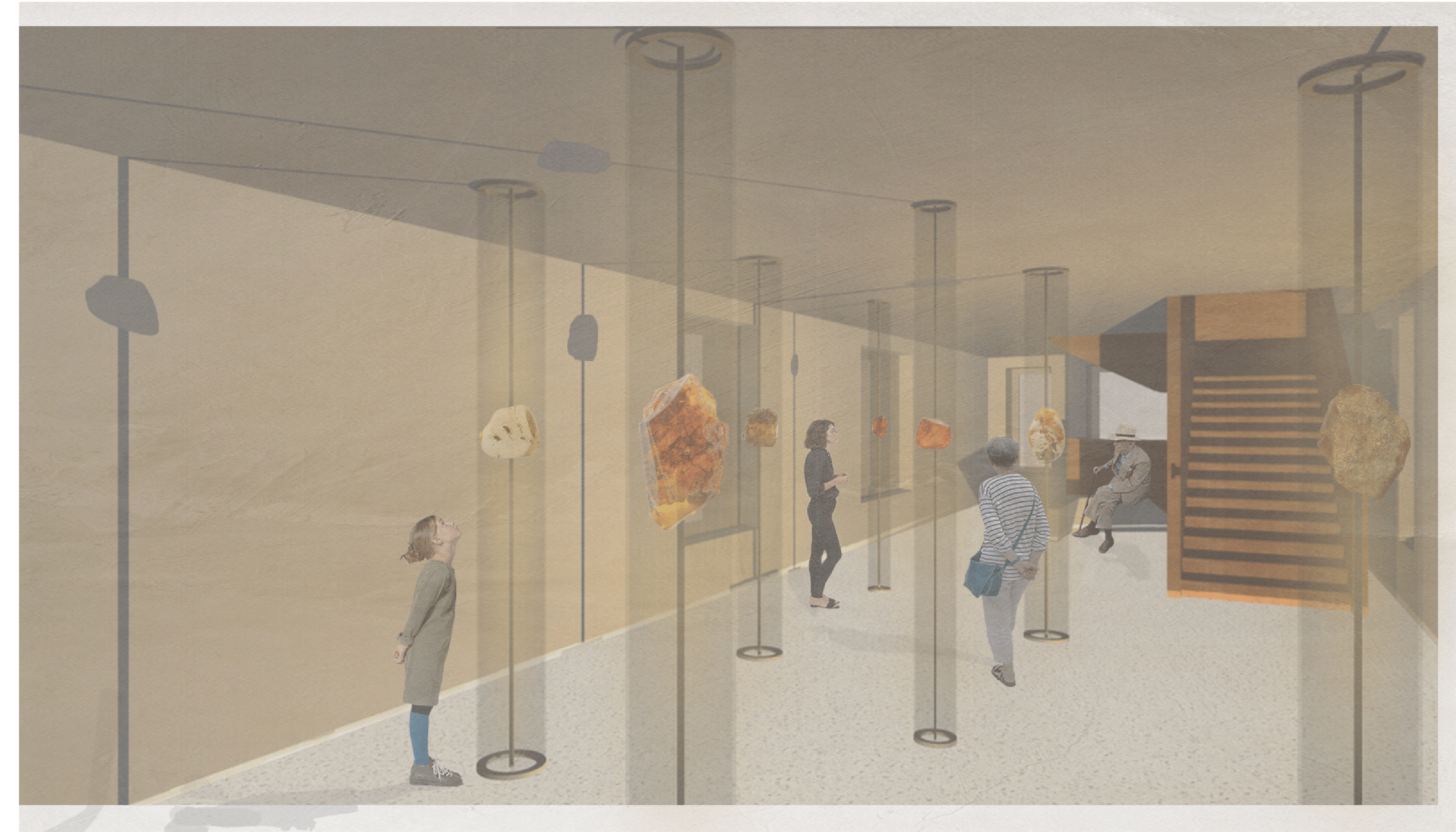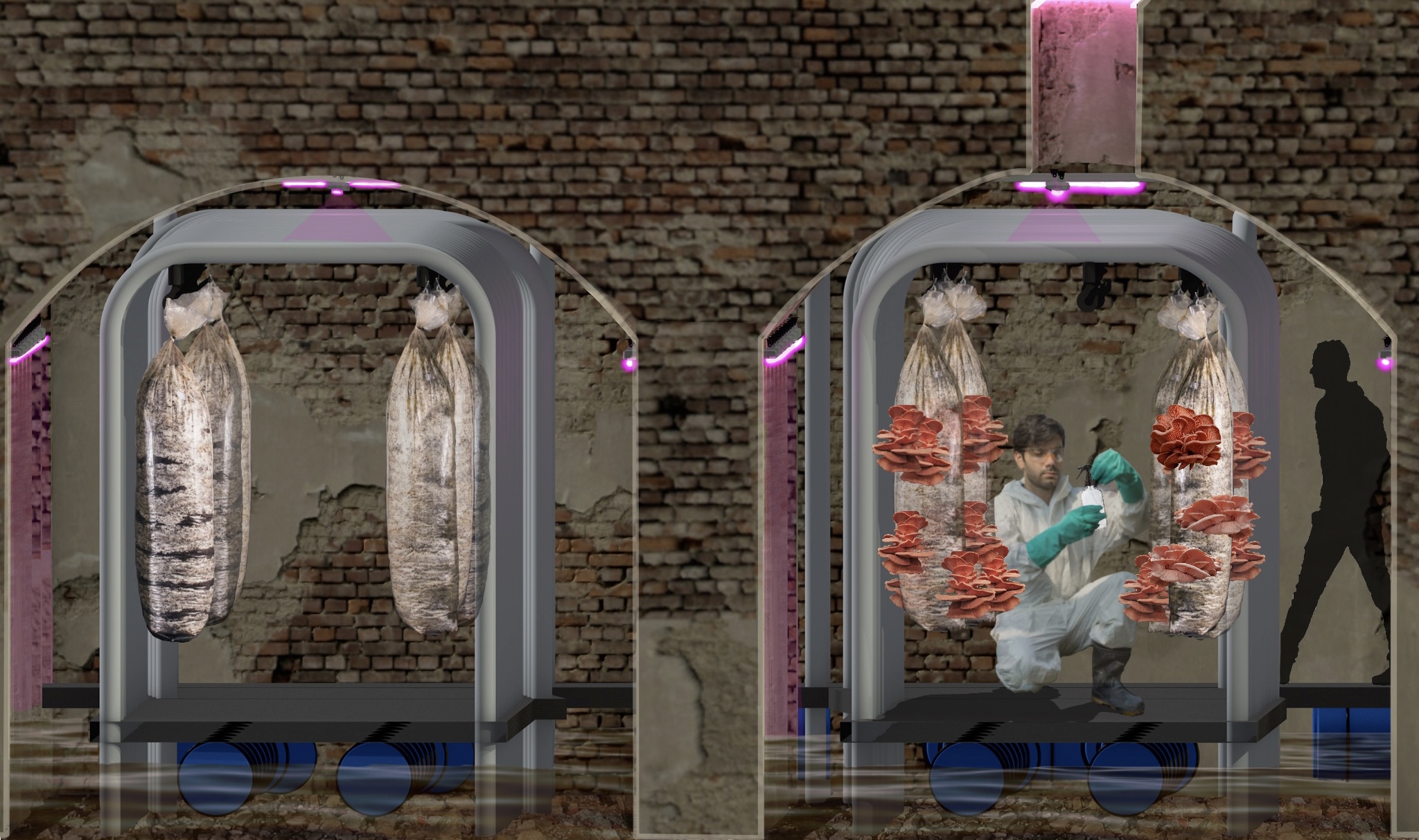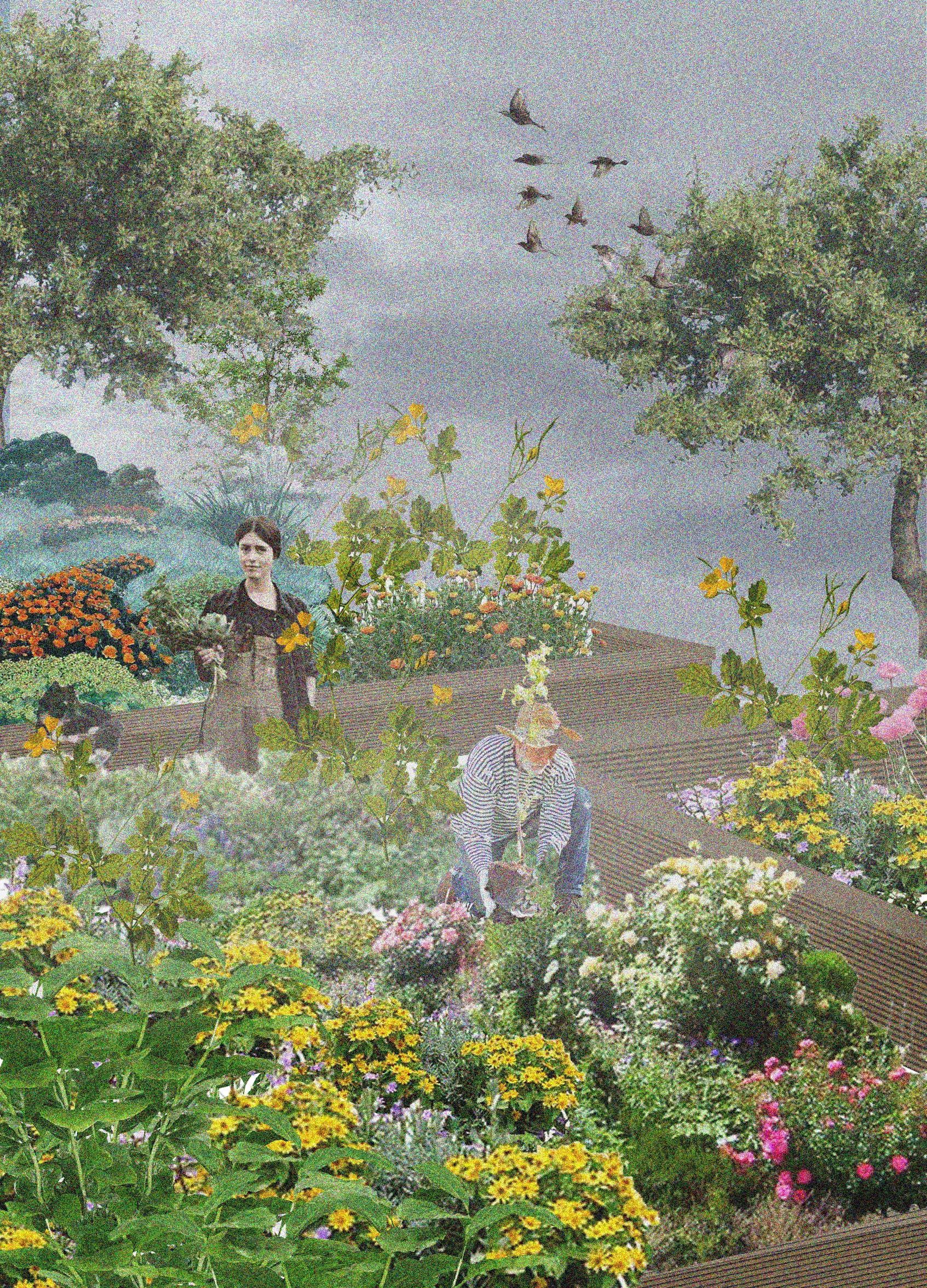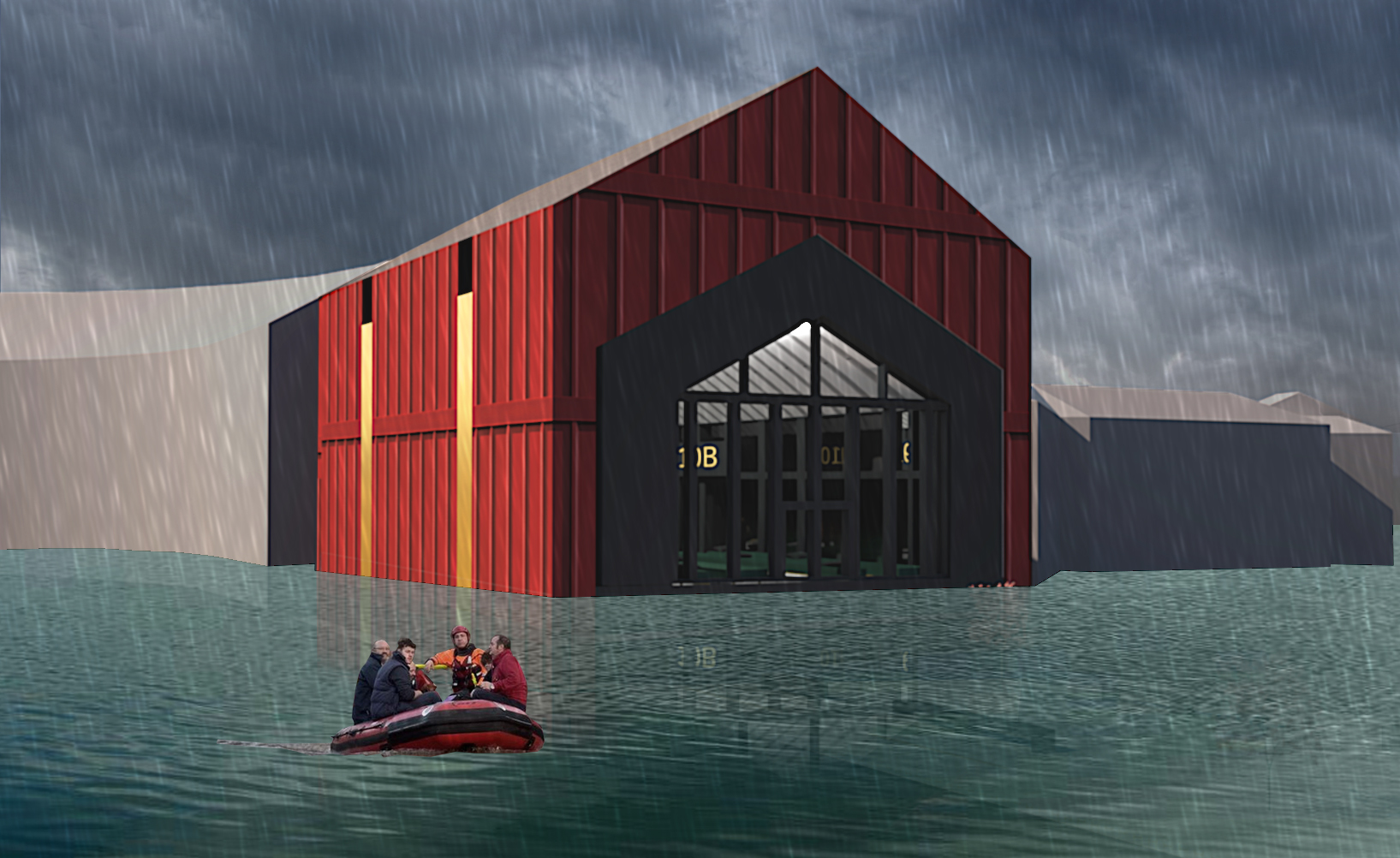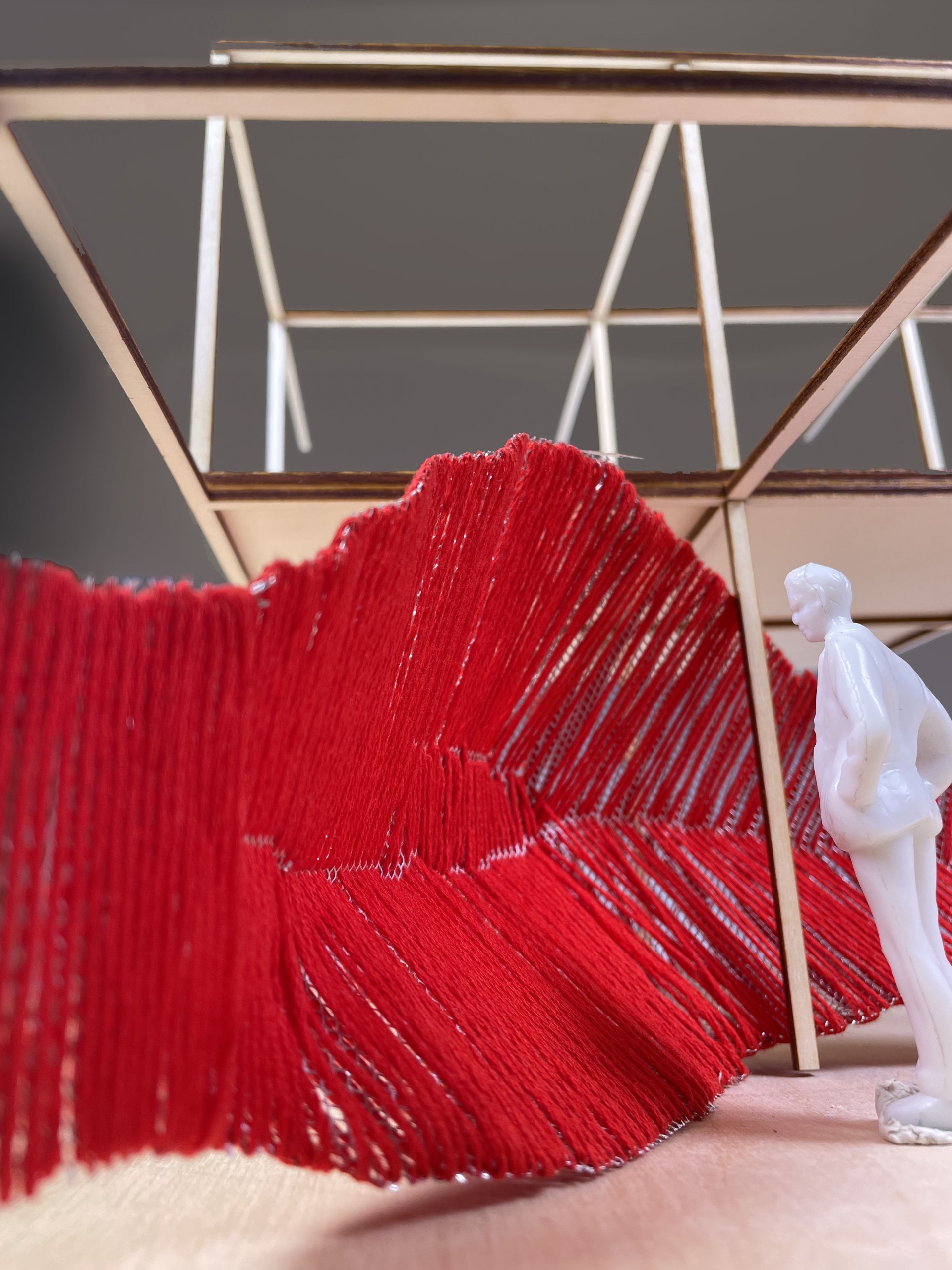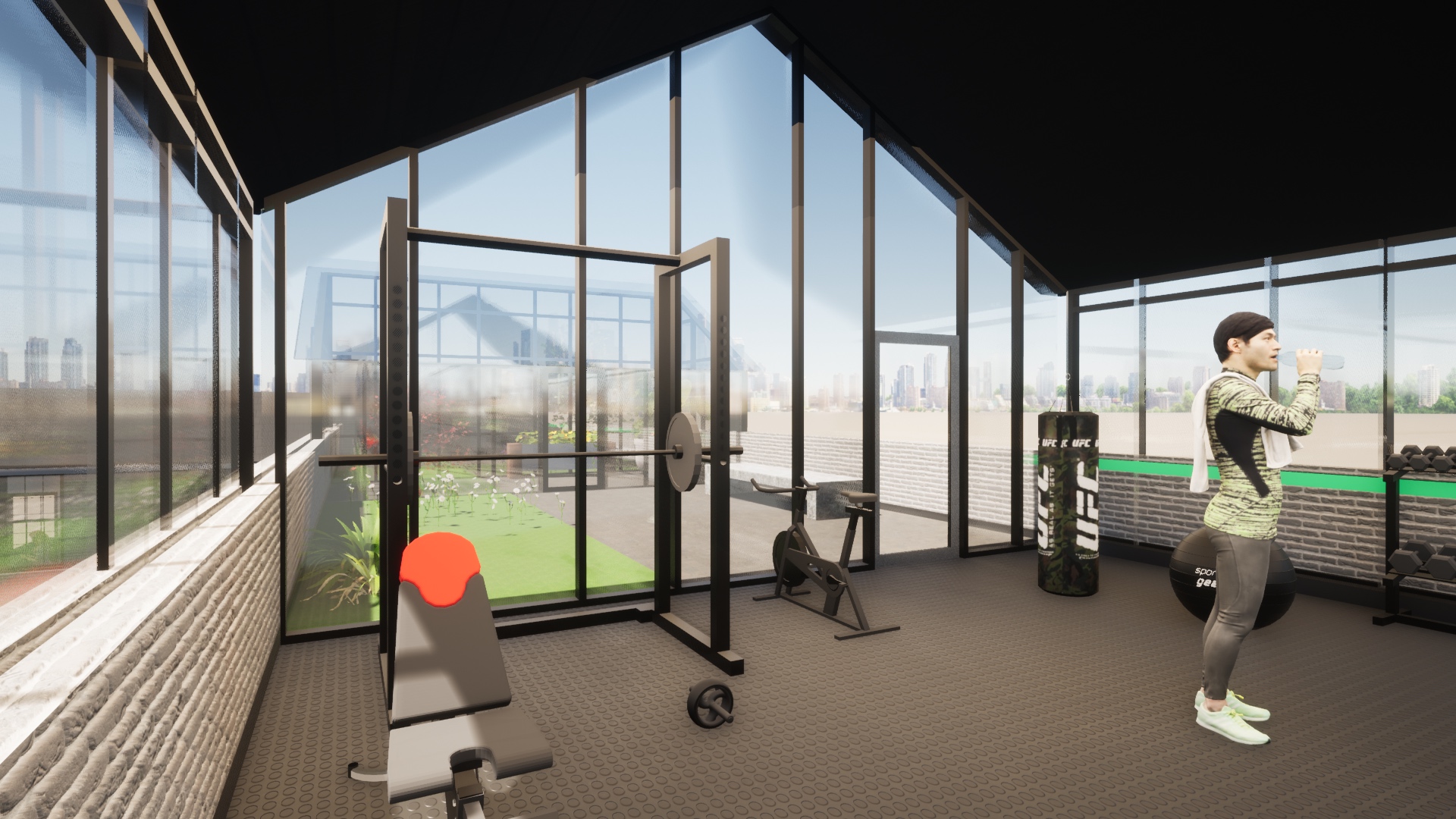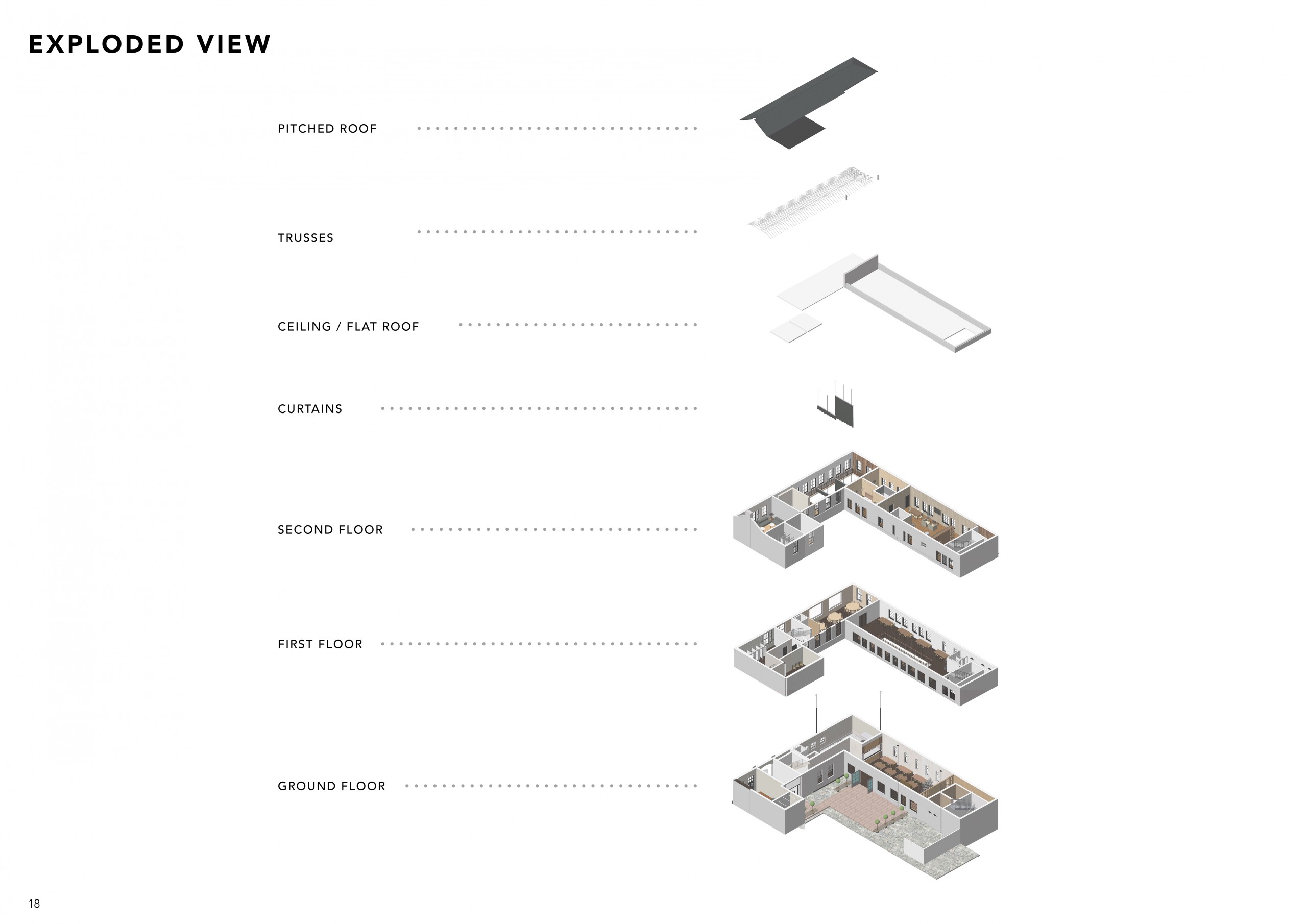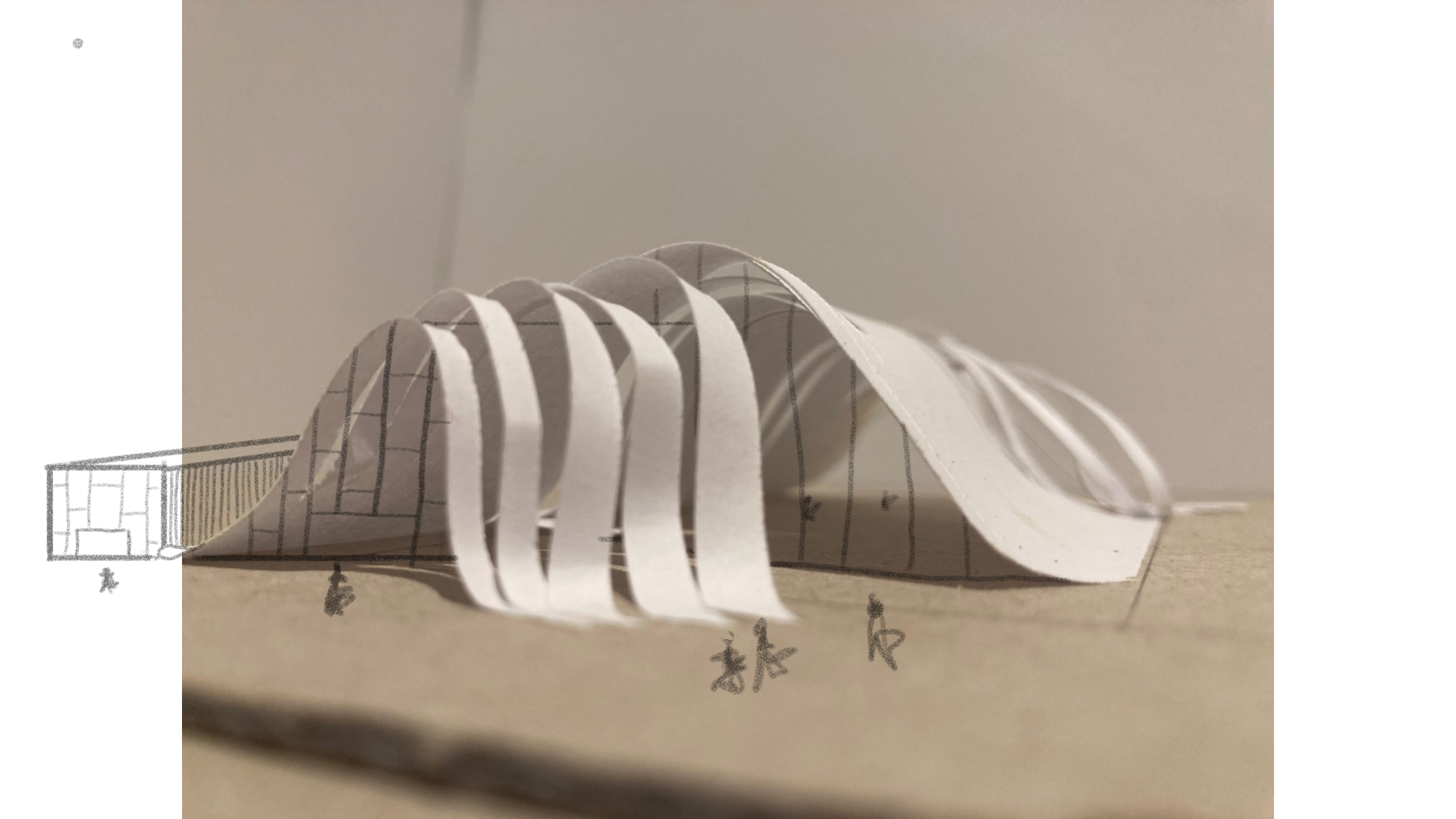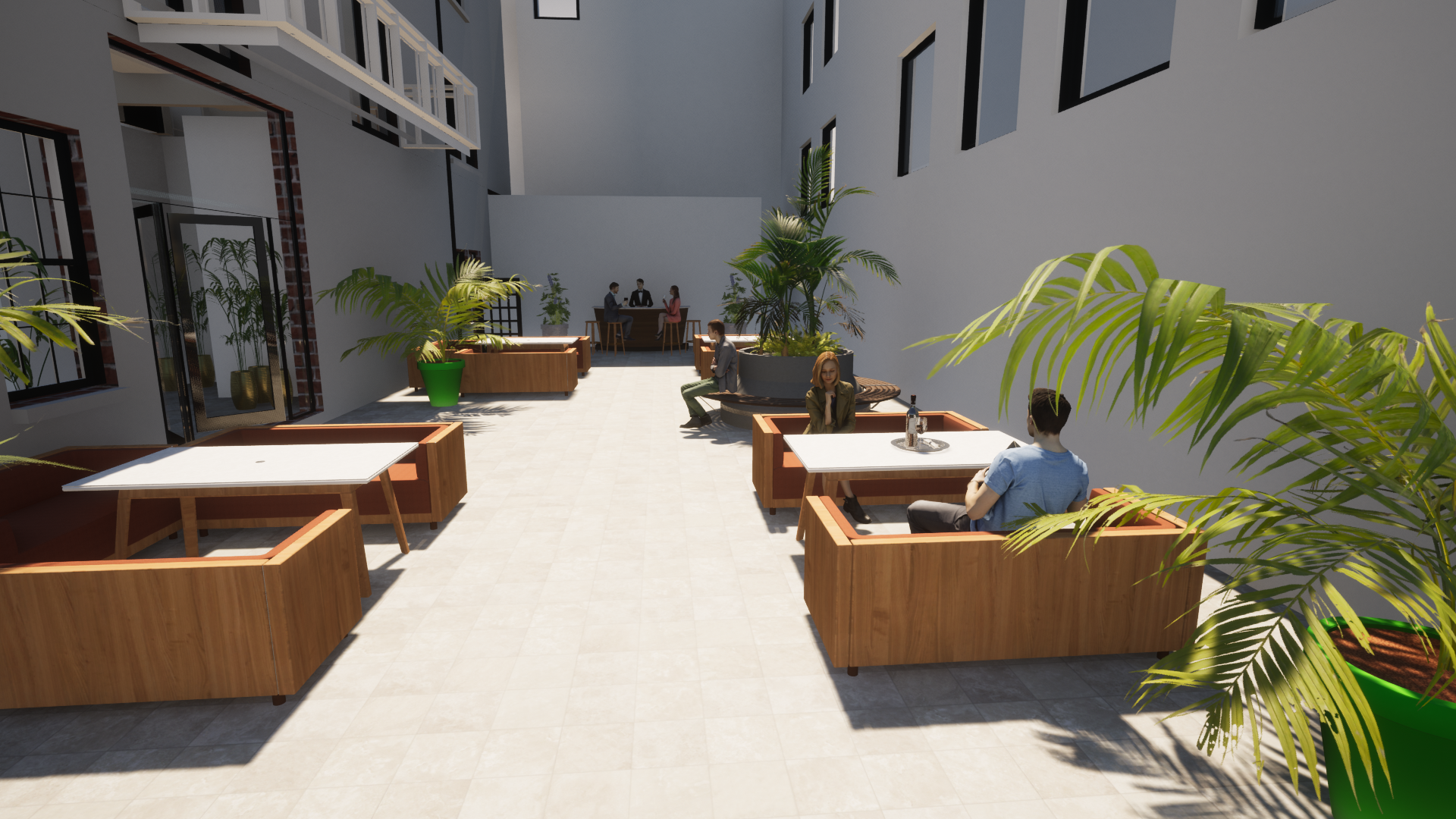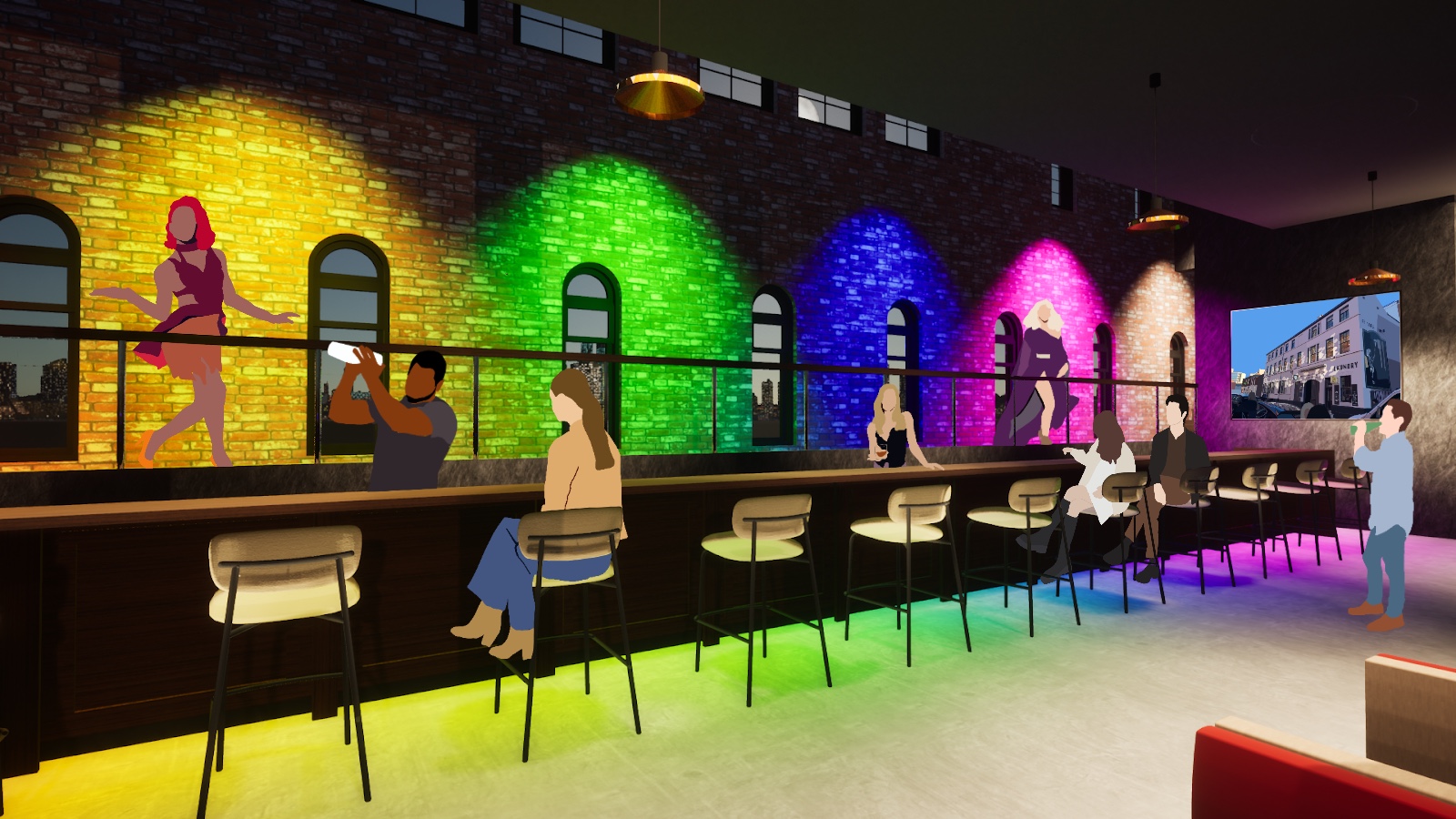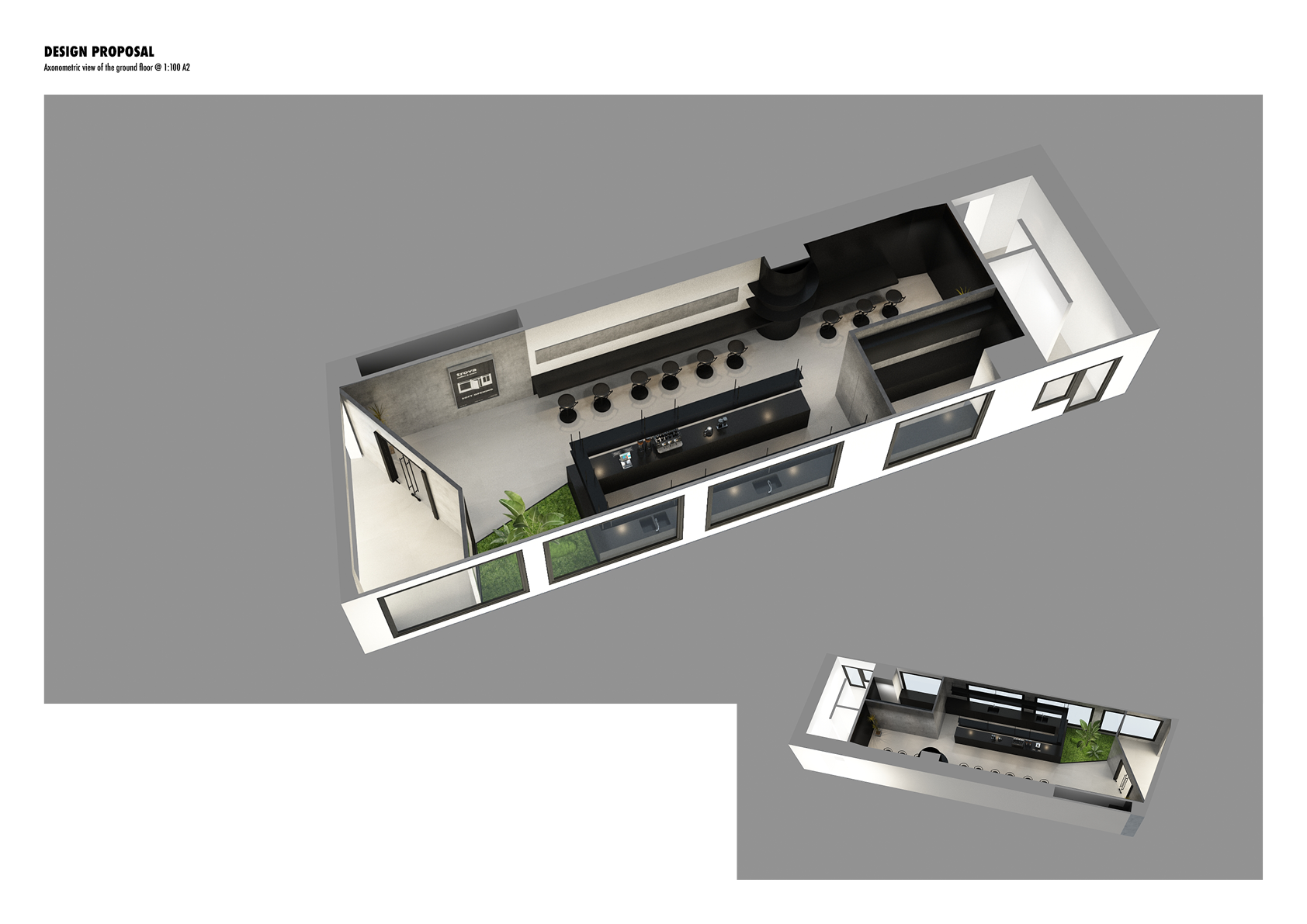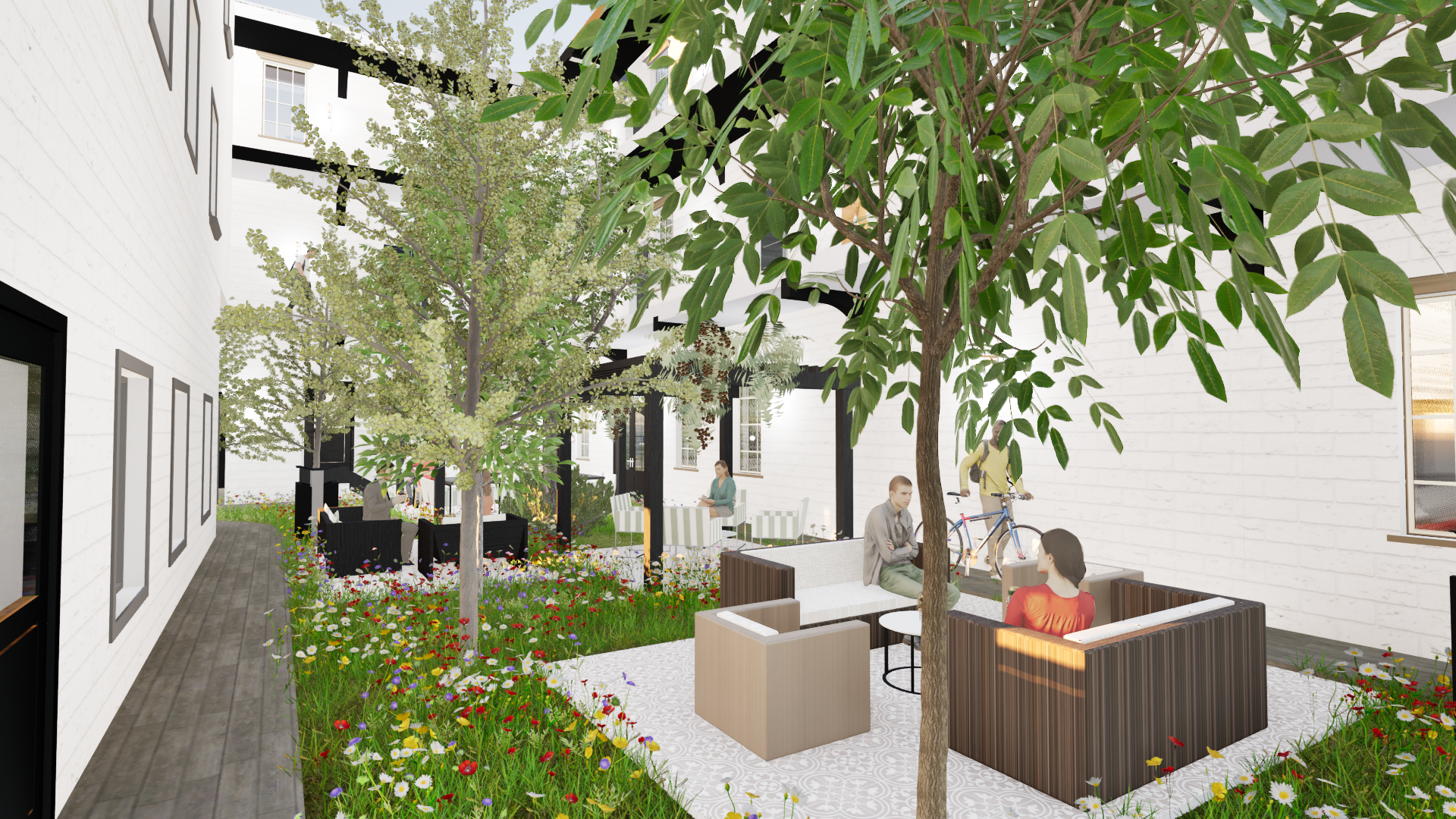
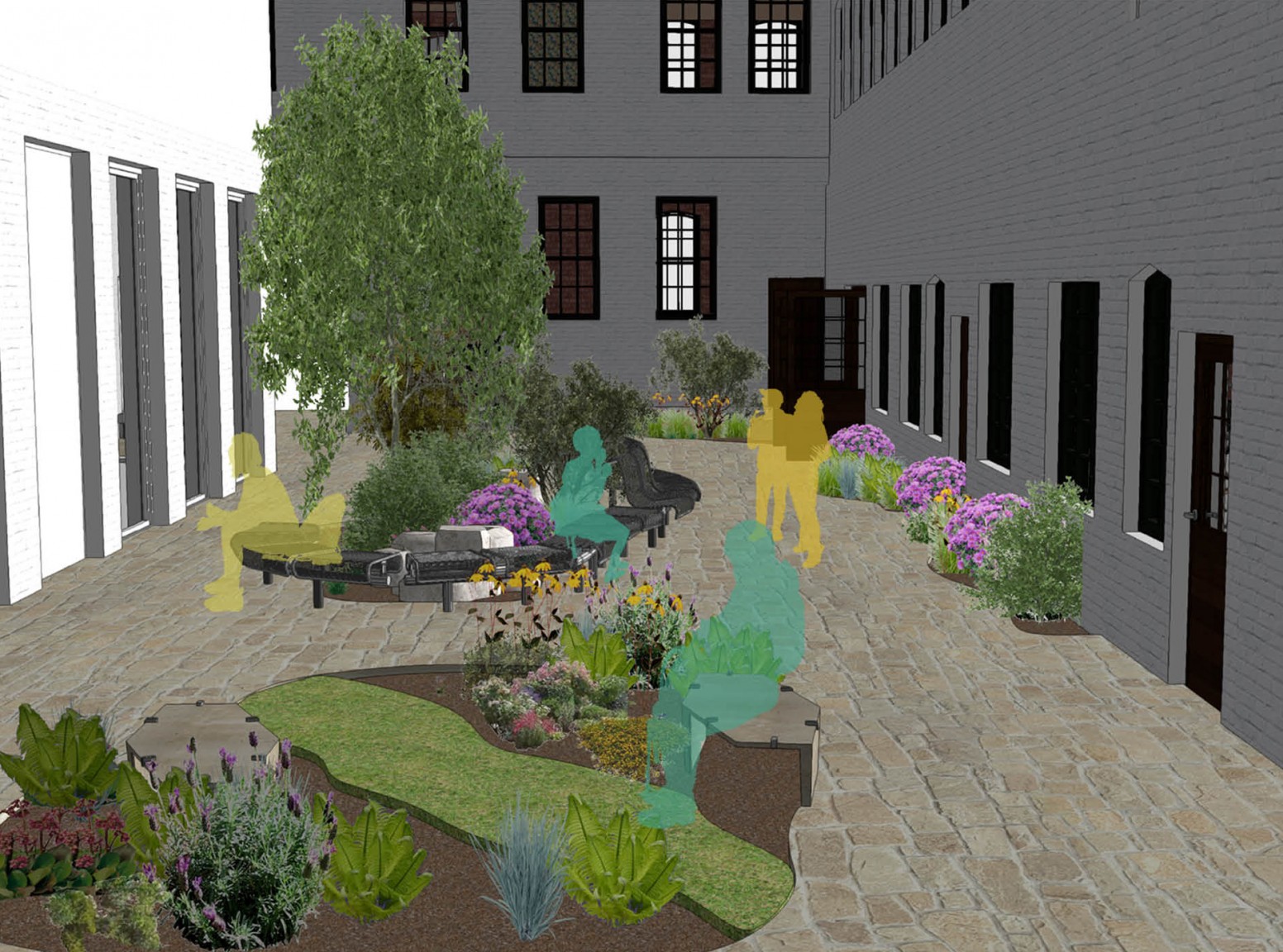
What are the challenges and opportunities in repurposing historic buildings to maximise use for people with disabilities? This is the question that informed Jessica Coghlan’s proposed project of the relocation of Sheffield Hallam Student Services to the Grade II listed Seller’s Wheel. Having used Student Services for dyslexia support, Coghlan was disappointed with the experience; in particular, the fragmented nature of the assessment process across several buildings and the quality of the internal environment. She felt the ‘standard office’ approach did nothing to enhance its primary use of supporting students with a range of disabilities – particularly mental health.
By relocating the University’s major student support system, she wanted to show the potential benefits of how the service could operate within a re-purposed historic building such as Seller’s Wheel. By relocating to a building with significant history and character, further pushes the stereotype of what a historical building in a city could be used for rather than just offices, residential, or retail space. She saw the challenge for Sellers Wheel to become a space of healing and support with cultural, commercial, and recreation activities. The building has the potential to become a space that’s uplifting and innovative for students – far more than is currently available within the campus.
Due to the recent effects of Covid 19, self-isolation has taken a major toll on student’s mental health. An improved space should be implemented to help support students through these difficult times. The re-purposed building should be a reflection of what it stands for as a system (supporting student’s wellbeing). Sellers Wheel embodies some of these characters. Its welcoming character, attractive façade, natural privacy due to its orientation, and large enough in scale to house all forms of support.

